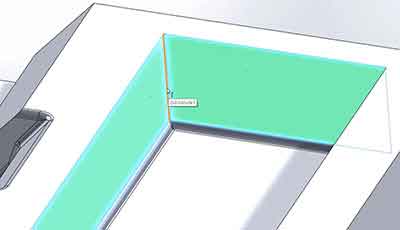When you design a part, it’s as important to think about wall thickness as the beauty of the design. If you don’t make the walls sufficiently thick, your part will crumble while clamped and you’ll be an unhappy designer. But there are thin wall milling techniques for CNC machines that can ensure the structural integrity of your parts. Here are some guidelines to ensure that your design has long-term structural integrity.
The CNC Wall Thickness Magic Number
The magic number to remember is .1875”. If your wall thickness is less than that, your part risks structural failure during manufacturing because the vice holding the part in place could crush it or the mill could break through. Still, thinner walls are often a necessity. While CNC machines let you mill out walls that are thinner than .1875” it requires additional labor, which will cost you more and increase lead times.
Those Times When You Need Thinly Machined Walls
If you do need thinner walls, here are two workarounds that could help.
- Don’t make the pocket deeper than .750”. Any depth beyond that increases the chances that your wall will bend or break during manufacture as the vice struggles to hold the part in place.
- Alternatively, you could leave a solid base below your part for the vice to grip onto. You still have the issue of a very thin wall, but it’s less likely to fail during manufacture if you use this method.
Using either of these methods increases the chance that your part will be structurally sound. It also helps ensure quality surface finishes and parts that are built to proper tolerances. Learn more in this video.
Related Videos
The Advantages of 5-Axis CNC Machining
Two Tips for Mating Parts with Sharp Corners
China Manufacturing Corp. Prototype CNC Machining Video
For more great machining tips, download our CNC Machining Design Guide.





